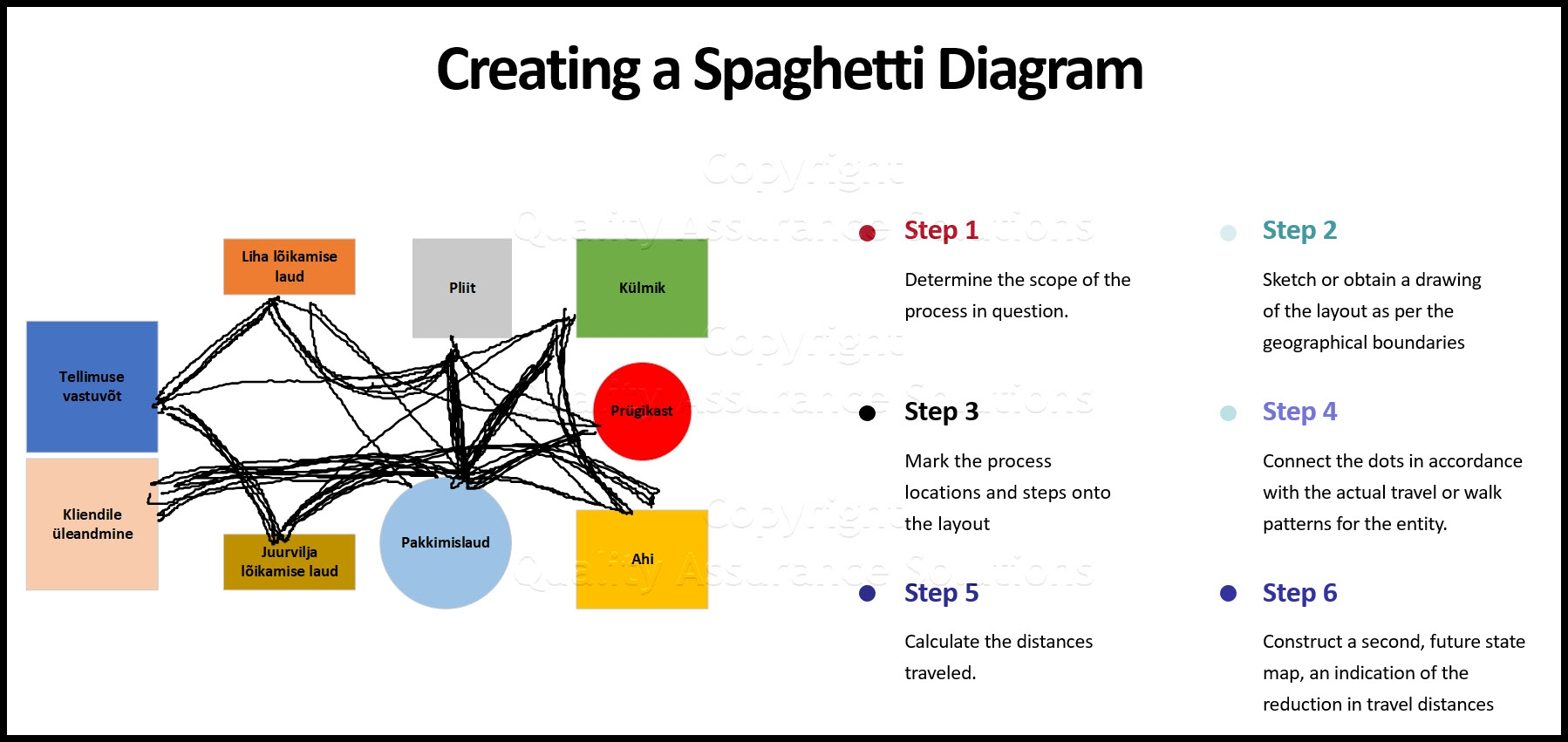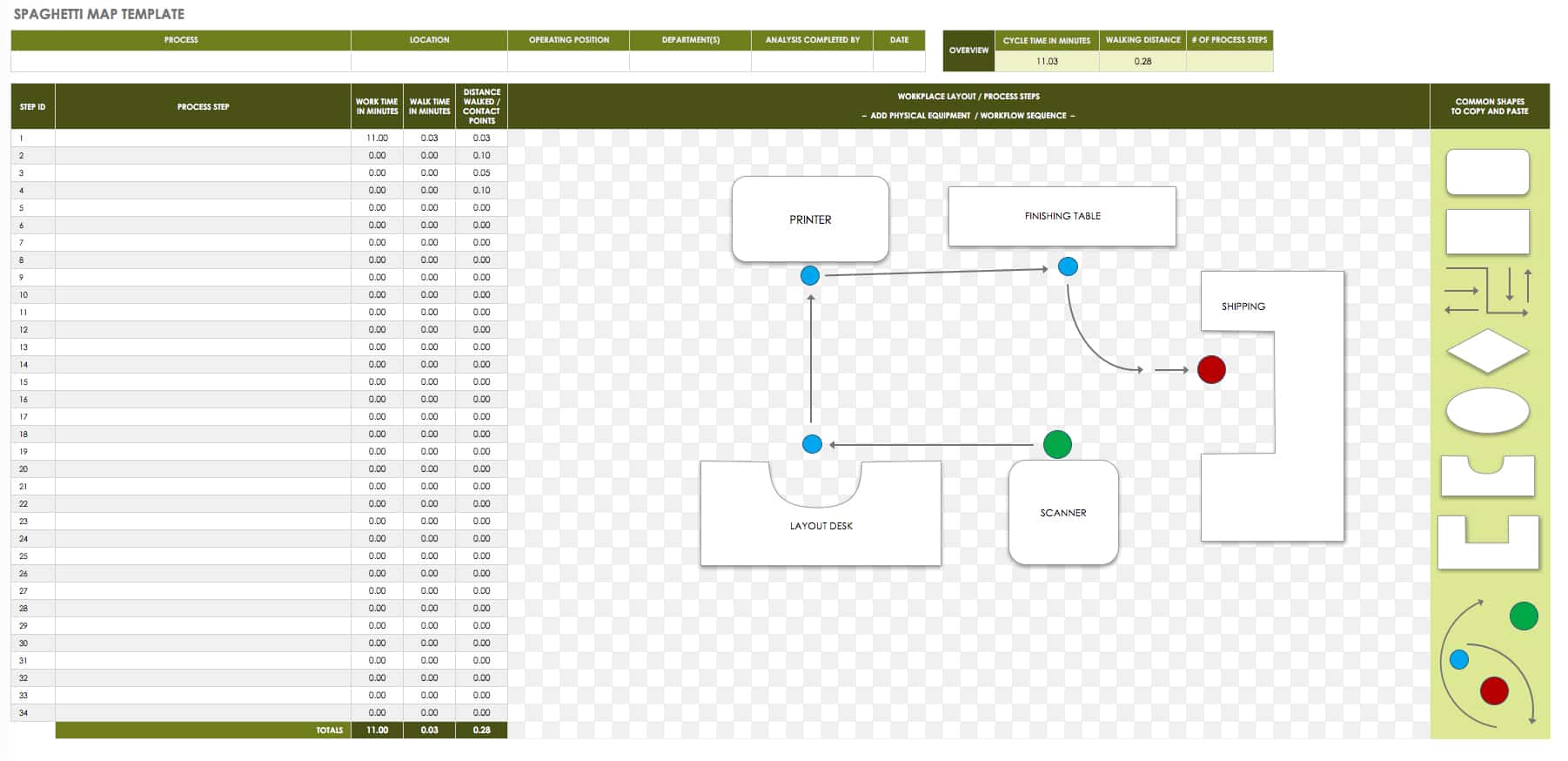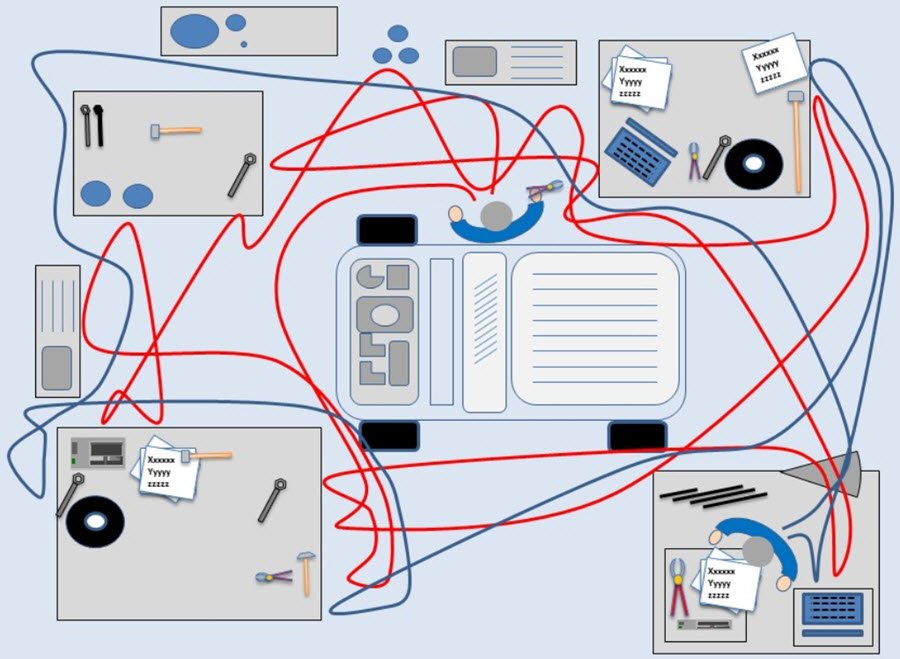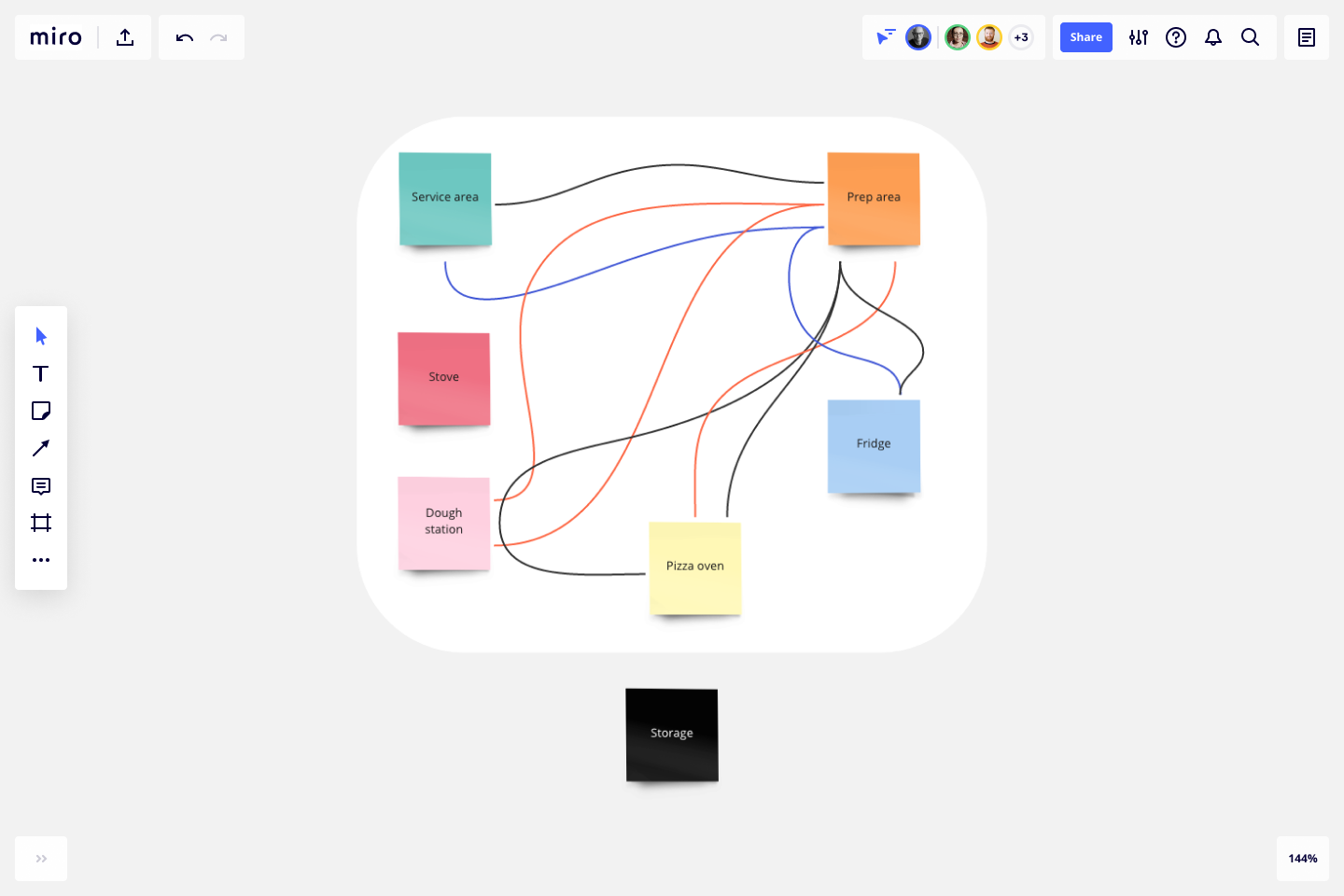By mapping the flow of information, documents, and approvals, you can enhance your understanding of project bottlenecks, like redundant communication loops or tasks getting stuck waiting for feedback. This diagram is also known as a spaghetti chart. It helps organizations see how their workers are moving physically through the workspace. What is a spaghetti diagram? You can also use it to chart the data flow between systems.
Spaghetti diagrams refer to a mapping tool used to identify the distance traveled by the product or people and the waiting time at each stage of the process. What is a spaghetti map? By tracing the movement of people or materials through process, it can quickly become obvious when the layout or work sequence needs correcting. You can easily edit this template using creately. In a spaghetti diagram, each part of the process flow is represented as a strand.
A spaghetti diagram, also known as spaghetti chart, spaghetti model, or spaghetti plot, is a particular tool for determining the distance traveled by (usually) man or (in some cases) material. The resulting process map looks like a plate of spaghetti, with tangled lines that reveal indirect, inefficient pathways in standard work processes. Creating a spaghetti diagram should be done with the operators or those that use the process. Start your spaghetti diagram with figjam track and optimize your projects with a free template to get you started. Hence, a spaghetti diagram can help you if you want to reduce the distance traveled by either parts or people.
A spaghetti diagram, also known as spaghetti chart, spaghetti model, or spaghetti plot, is a particular tool for determining the distance traveled by (usually) man or (in some cases) material. The spaghetti map allows users to document the setup of any work area with the goal of mapping the movement of individuals during the completion of a specific process. A spaghetti diagram visualizes the flow of workers and products in a process to identify potential areas of improvement. You can easily edit this template using creately. By mapping the flow of information, documents, and approvals, you can enhance your understanding of project bottlenecks, like redundant communication loops or tasks getting stuck waiting for feedback. The name spaghetti comes from the fact that real world paths are not straight lines. Use a spaghetti diagram to identify redundancies in the work flow and opportunities for process improvement. A spaghetti diagram shows the continuous flow of an activity during a process. In a spaghetti diagram, each part of the process flow is represented as a strand. Use our spaghetti diagram template in lucidspark. A spaghetti diagram is a visual representation that maps out the physical flow of work in a process, highlighting the paths taken by workers, products, and information. These free blank templates make writing an obituary faster and easier. By tracing the movement of people or materials through process, it can quickly become obvious when the layout or work sequence needs correcting. It details the flow, distance and waiting time of the transportation of items in the process. The spaghetti diagram is a great waste observation tool even for beginners.
It Provides Insight, Making It Easier To Identify And Remove Redundancy In The Work Flow, Which Will Speed Up The Whole Process.
A spaghetti diagram shows the continuous flow of an activity during a process. It details the flow, distance and waiting time of the transportation of items in the process. It helps organizations see how their workers are moving physically through the workspace. The spaghetti map allows users to document the setup of any work area with the goal of mapping the movement of individuals during the completion of a specific process.
You Can Export It In Multiple Formats Like Jpeg, Png And Svg And Easily Add It To Word Documents, Powerpoint (Ppt) Presentations, Excel Or Any Other Documents.
In a spaghetti diagram, each part of the process flow is represented as a strand. The resulting process map looks like a plate of spaghetti, with tangled lines that reveal indirect, inefficient pathways in standard work processes. A spaghetti diagram template is a visual tool used in process improvement to map the flow of movement and materials in a workspace, helping identify inefficiencies and areas for improvement. Start your spaghetti diagram with figjam track and optimize your projects with a free template to get you started.
Record The Path With A Pencil And Use A Measuring Wheel Or Tape Measure To Document Distances.
A spaghetti diagram is a visual representation that maps out the physical flow of work in a process, highlighting the paths taken by workers, products, and information. What is a spaghetti map? Use a spaghetti diagram to define the existing flow as a starting point for removing unnecessary movement of people and materials through a workspace. You can easily edit this template using creately.
The Spaghetti Diagram Is A Powerful Visual Tool In The Realm Of Six Sigma, Enabling Organizations To Identify And Address Inefficiencies In Their Processes.
A spaghetti diagram, also known as spaghetti chart, spaghetti model, or spaghetti plot, is a particular tool for determining the distance traveled by (usually) man or (in some cases) material. Create a spaghetti chart to track why they are struggling to meet deadlines in product development. Create lean examples like this template called spaghetti diagram that you can easily edit and customize in minutes. By tracing the movement of people or materials through process, it can quickly become obvious when the layout or work sequence needs correcting.









